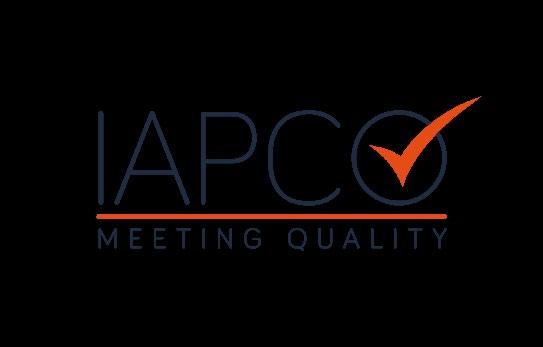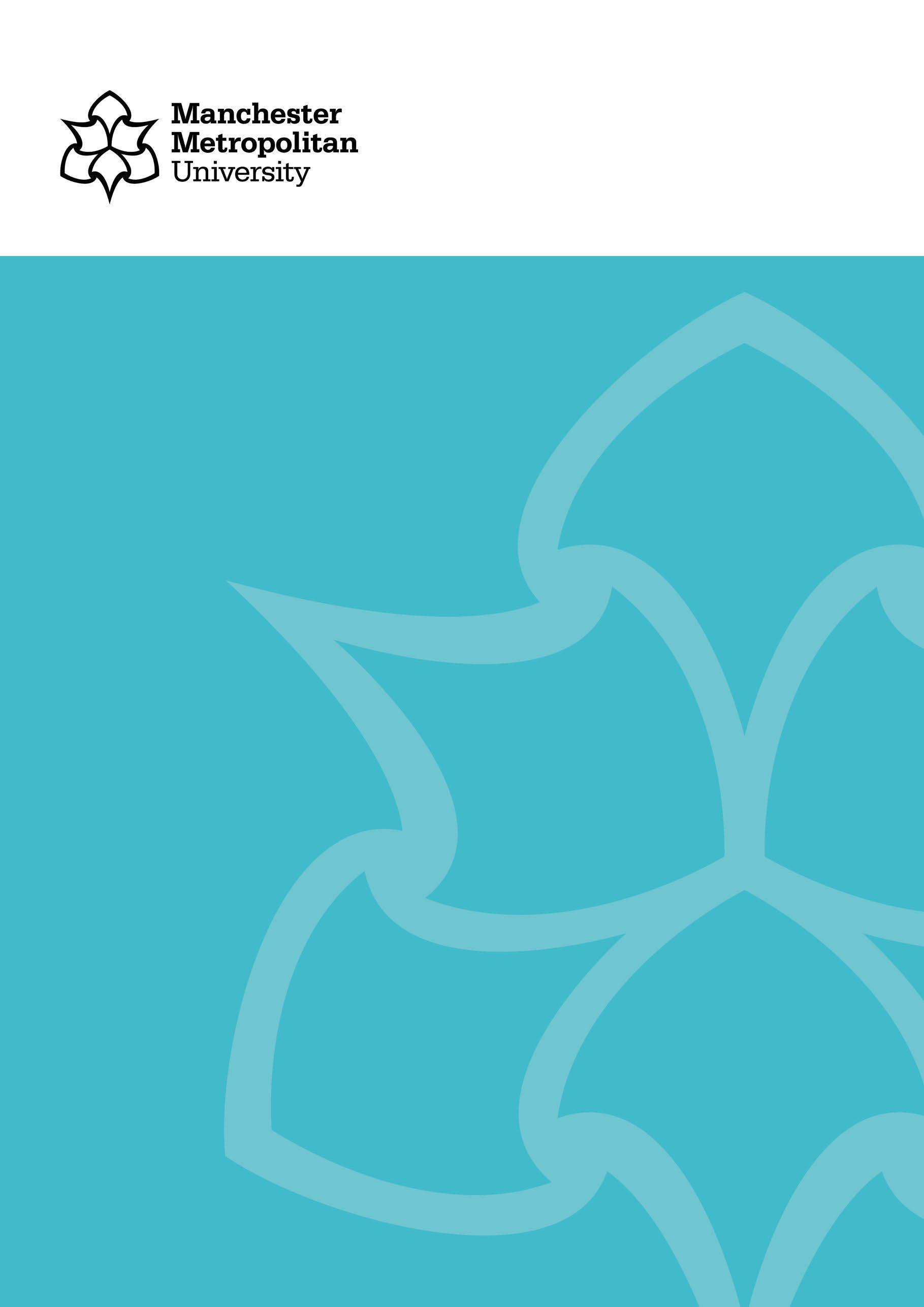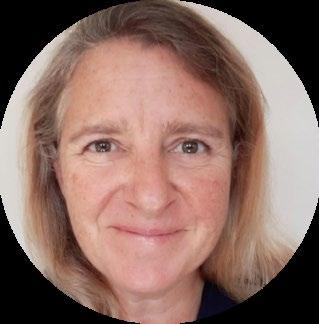Survey: Global Wellbeing & Connectivity in the Meetings Industry


JANUARY 202 3
Sarah Cecil, Prof Marc Jones, Dr Lucy Walker
The International Association of Professional Congress Organisers (IAPCO) has commissioned a unique body of research to provide specific insight into certain key areas across the global meetings and events industry. This supports concurrent industry-wide research projects which initially focused on areas such as economic impact and meeting design.
This body of work aims to gain a better understanding of the feeling of wellbeing and connection that meetings professionals from the global meetings and events industry feel and to gain a sense of how and if they feel they are contributing to the greater good through delivery of their clients’ events.
The more research that is gathered, the more specific programmes and initiatives can be designed and delivered to meet the needs of this workforce.
IAPCO will be launching Phase II of this project in April 2023 to capture further data.
KEY FINDINGS
• Wellbeing scores were positively associated with an increase in perceived resources to cope with large work events and team cohesion, suggesting that as work force wellbeing increased so did the ability to cope with work demands and bond with others,
• In the global meetings population , the in di vidual drivers (Inner Development Goals) to enact the UNSDGs exist,
• An increase in cohesion and group identity is positively associated with an increase in resources to cope with demands o f preparing for a large event,
• Perceptions of work-related resources were greater than perceptions of workrelated demands in the majority of working locations . Highest scores were observed in participants working in Australas ia and Europe,
• The number of years spent working in the industry was positively associated with an increase in resources to cope with the demands of working a large event,
• Wellbeing scores were, on average, consistently high across all working locations,
• Cohesion scores for the specific organisation were higher compared to scores related to the wider industry. However, g roup identity scores did not differ widely,
• The length of time an individual has been working within the industry is positively associated with increased cohesion with other colleagues.
• Scores on wellbeing, demands and resources and group cohesion did not differ depending on number of days spent working in the office.
Authors
Sarah Cecil MSc CPsychol
Chartered Sport Psychologist | English Institute of Sport
Sarah Cecil is a Chartered Sport Psychologist and has worked in Olympic and Paralympic sports for over 20 years. She has extensive experience in helping athletes reach their ultimate goals. She was the sport psychologist for the British Athletics team in London 2012. Post-2012 she worked at the Team GB Intensive Rehabilitation Unit and delivered coach education programmes for UK Sport. Sarah was the sport psychologist for Team UK at 4 Invictus Games from London to Sydney. More recently, she was the Team GB Sport Psychologist in Beijing 2022. She has also created an Emotional Decompression tool to support adjustment post major events which have been successfully implemented post-Olympics. Sarah uses the expertise she has to enable athletes to deliver under pressure and to support coaches and performance staff to fulfil their potential. Contact: tw1psych@gmail.com.

Department of Psychology | Manchester Metropolitan University Research Associate at Manchester Metropolitan University
Dr Lucy Walker is a research associate at Manchester Metropolitan University. Lucy was awarded her PhD in 2021 which focused on behaviour change techniques and the influence of stress. Since then, Lucy joined the stress health and performance research cluster at Manchester Metropolitan University working on a range of research and consultancy projects, including investigating wellbeing and stress in the workplace and performance in stressful environments. Lucy uses a mixed method approach in her work, including survey design, physiological measurements, interviews and focus groups to achieve research aims. Most recently, Lucy has developed skills in Social Network Analysis, a technique used map and track team connections. Lucy has a range of peer reviewed publications and has presented her work internationally. Contact: lucy.walker@mmu.ac.uk
Department of Psychology | Manchester Metropolitan University
Marc is a Professor of Psychology at Manchester Metropolitan University. His work is focused on understanding the impact of stress on health, wellbeing and performance and effective group interactions. The protocols, and approach, that Marc and colleagues have developed for the assessment and training of responses in challenging environments has been utilised by businesses, education settings, professional athletes and sports teams. In addition to his ongoing work in business and sport, Marc is currently working on research and consultancy projects in extreme environments. These include military settings, analog space travel and emergency medicine groups. Marc has published widely with over 100 publications comprising peer-reviewed papers, books and book chapters. Contact: marc.jones@mmu.ac.uk

Supporting Contributors
Dr Fiona Wright Consultant Clinical Psychologist | NHS UKWith 17 years’ experience post qualification in Adult Mental Health and Clinical Health in both NHS and private settings, Fiona maintains her NHS practice, with joint operational line management responsibility for a locality Psychological Therapies Team. The team work with clients presenting with mild through to severe and enduring mental health difficulties.
In her more than 30 years career at Japan Convention Services, Yukari has been engaged in sales and project management of international/domestic conferences in medical, dental, and pharmacological fields. She also participated in the establishment of an international medical association and has successfully attracted many international conferences to Japan. Yukari shares her knowledge and experience with local governments and the industry by lecturing how to improve their skills in attracting international conferences.
 Renata Pozza
Renata Pozza
Renata is passionate about Live Marketing and Communities, with vast experience in meeting management and strategic planning. She is an expert in associations and non-profits, providing strategy, solutions, and results that generate impact and leads the Consulting and Community Solutions area at MCI Brazil/LATAM.


Background
In October 2022 IAPCO supported, by Manchester Metropolitan University and distributed through the Strategic Global Task Force of National PCO Associations | IAPCO: The International Association of Professional Congress Organisers, created the Global Wellbeing and Connectivity in the Meetings Industry survey.
The Union of International Associations (UIA) Survey 2022 – Continued COVID-19 Impact on International Association Meetings reported that only 50% of associations had surveyed their members on the impact of the pandemic.
The 29th edition of the UFI Global Exhibition Barometer (June 2022) reported that internal management was the most pressing business issue (a rise from 19% to 20%). Within internal management, 64% selected human resources as the issue.
This survey focuses specifically on wellbeing, feelings towards work, connection to others, perceived belonging to the industry and individual drivers for the Sustainable Development Goals (SDGs).
Research Measures
To measure wellbeing, the World Health Organisation Five Wellbeing Index (WHO-5) was utilised. The WHO-5 is a short self-reported measure of current mental wellbeing. The World Health Organisation define Mental Health as: a state of mental well-being that enables people to cope with the stresses of life, realize their abilities, learn well and work well, and contribute to their community. Research supports the construct validity of the WHO-5 globally (Winther Topp et al., 2015).
Feelings towards work were assessed by measuring perceived demands and the perceived resources needed to cope with the demands of work (Mendes et al., 2007). Six questions assessed perceived demands (e.g., ‘work is demanding, work is stressful) and five questions assessed resource appraisals (e.g., I have the abilities to perform well, work is a positive challenge). It is possible to average responses to the demand questions and responses to the resource and create a ‘challenge index’ by calculating the demands/resources ratio.
Alongside this reintegration, on returning home from events was measured using questions from the AAQ-2 (Bond et al., 2011), which measures psychological flexibility and the MAAS,. which measures mindfulness (Brown & Ryan., 2004). The questions were identified based on research on how people feel on returning from major sporting events such as the Olympics.
Connection to others was measured using a shortened version of the Group Cohesion Questionnaire (Carron et al, 1985). This is a measure widely used in high performance sport to measure team dynamics.
Perceived belonging to the industry was measured using a Team Identity Scale using a three-item scale based on previous work (Doosje et al., 1995) and utilised in research on medical emergency teams’ performance under stress (Carenzo et al., 2020).
Individual drivers to the SDGs were measured by using questions devised from the 5 themes identified by the Inner Development Goals. The Inner Development Goals (IDGs) have identified science-based skills and qualities that help us to live purposeful, sustainable, and productive lives. The IDGs framework is fundamental in the work to reach the United Nations Sustainable Development Goals (UNSDGs).
Findings
An online survey was distributed to members of the International Association of Professional Congress Organizers (IAPCO) and associated partner organisations. The survey has a series of questions collating demographic information, information regarding the individual’s working life, measures of wellbeing, perceived demands and resources in relation to working a large work event, feelings towards postevent reintegration, inner development goals, and group identity and cohesion with colleagues The information presented below provides aggregated outputs from the survey.
Complete demographic information data was available from 135 participants from the 144 participants that started the survey Dropout rates varied throughout the completion of the questionnaire and information regarding the sample available for each section is provided alongside the results. Data were collected between the 16th of November and the 23rd of December 2022.
Disclaimer
To maintain data privacy, we cannot provide individual responses and only aggregated data are presented in this report. We required a minimum number of responses to be able to provide aggregated data.
Demographics
The locations of individuals who completed the survey is shown in Figure 1.
The demographic information of individuals who completed the survey breakdown is presented in Table 1.





Note: N = number of individual responses, M = Mean.
Note: Middle East is not represented due to a sample of N=1.
Wellbeing
Wellbeing was measured using the WHO-5 Wellbeing Index. Scores can range from 0-25 on the index with higher scores equating to higher levels of wellbeing The WHO-5 indicates that scores below 13 relate to poor overall wellbeing. Scores are usually reported as a percentage of 100 so it is customary to multiply the scores by 4 to reach the percentage number.
In the current sample a total of 131 participants completed all 5 items of the wellbeing Index, indicating an average score of 69% (Standard Deviation = 12.9), scores ranged from 32%-100%. The majority of working locations indicate average scores between 68-80%, whereas the lowest average wellbeing scores are shown in participants from Asia Pacific, China, India, see Figure 4
Note: Middle East is not represented due to a sample of N=1.
Demand and Resources
A series of questions were asked in relation to the perceptions of working demands and the perception of psychological resources to meet these demands. Through measuring this psychological construct, we can assess whether individuals perceive they have the resources to cope with demands of a large work event. Having sufficient resources to meet the demands of work is closely linked to wellbeing, engagement and motivation. An index was created whereby more positive responses indicate greater perceived resources in relation to perception of demands, what psychologists call a ‘Challenge
Response’
In the current sample 116 individuals completed all 11 items on the scale, with an average score of 4.0 (standard deviation = 6.2), ranging from -16 to 16. The majority of locations displayed positive scores, indicating sufficient resources to cope with demands of a large work event Highest scores were observed in participants from Austral asia and Europe, see Figure 5.
Note: Middle East is not represented due to a sample of N = 1.
In previous research (Mendes et al., 2007) based on laboratory tasks, people typically have fewer resources than demands and so the positive nature of these scores indicate overall that individuals feeling positive (challenged rather than threatened) about their ability to cope with a large work event.
Post-Event Reintegration
Three questions were asked in relation to how individuals perceived they felt after working at a large event. Question 1 was asked on a scale of 1-6, whereas questions 2 and 3 were asked on a scale of 17. In total 116 participants completed all three items. A higher number on question 1 indicates a more positive perception. A lower score on questions 2 and 3 indicate a more positive perception.
See Table 2. Summary of post-event reintegration question responses. And Figure 6 and 7
I find it difficult to stay focused on what’s happening in the present? (A score of 4 reflect infrequently finding it difficult)
I worry about not being able to control my thoughts & feelings?
(A score of 3 reflects seldom not being able to control thoughts)
It seems like most people are handling their life better than me?
(A score of 3 reflects seldom negative comparison to others)
Note: N = 116, Middle East is not represented due to a sample of N = 1.
Asia Pacific, China, India
North America Mexico, Central and South America
Total Europe
Asia Pacific, China,, India
North America
Australasia
Mexico, Central and South America
In general, most people felt like they could stay focused in the here and now on return from an event. They were somewhat infrequently distracted. There was not a great deal of difference between regions. Most people did not seem to worry about controlling their emotions and thoughts post event In a similar vein, there did not seem to be a negative comparison to others post-event
Team Cohesion
Individuals were asked a series of questions in relation to how they connected to both their local working team and the wider industry. Questions were centred around the concepts of Task Cohesion (when a group comes together to achieve a particular task), Social Cohesion (when members of a group enjoy spending time in each other’s company) and Team Identity (perceptions of belonging to a particular group, such as your company, or the wider profession).
Both task and social cohesion items were summed to create a score between 2-18 for task and social cohesion respectively, with higher scores indicating greater cohesion. Group or team identity items were averaged to create a total score between 1-7, with greater scores indicating a greater sense of group or team identity See Table 3 for a summary of the results for the whole sample and individual locations
Note: Middle East is not represented due to a sample of N=1.
As expected, both task and social cohesion scores were higher in local teams, than the wider industry (see Figure 8) However, group identity scores did not widely differ between local teams and the wider industry Scores for Task Cohesion, Social C ohesion and Group Identity did not widely differ between locations of work.
Asia Pacific, China, India
Mexico, Central and South America
Asia Pacific, China, India
Note: Middle east is not represented due to a sample of N = 1.
Inner Development Goals
A series of questions were designed to reflect each five themes (Being, Thinking, Relating, Collaboration and Acting). Survey responders were asked to respond on a scale of 1-7 to each question, with higher scores relating to increased alignment with the theme. Table 4 displays average total scores for each themes’ questions, alongside a breakdown of average responses from each location, see Figure 9. For each of the themes, the expert panel identified through consensus one area to focus on.
The inner compass score relates to the Being – Relationship to Self theme. There are 5 descriptors in this theme, which is focused on cultivating the inner life and developing and deepening individual relationships to thought, feelings and the body in order to be present, intentional and non-reactive when an individual faces complexity.
The perspective score relates to the Thinking - Cognitive Skills theme. This focused on developing cognitive skills by taking different perspectives, evaluating information and making sense of the world as an interconnected whole in order to enable wise decision making.
The humility scores relate to the Relating – Caring for Others and the World. This focused on appreciating, caring for and feeling connected to others such as neighbours, future generations or the biosphere in order to help create a more just and sustainable systems and societies for everyone.
The inclusive mindset and cultural competence scores relate to the Collaborating - Social Skills theme. The theme focuses on the need to develop the ability to include, hold space and communicate with stakeholders with different values, skills and competencies in order to progress on shared concerns.
The optimism scores relate to the Acting – Driving Change theme. This is focused on qualities such as courage and optimism. These help individuals to acquire true agency, break old patterns, generate original ideas and act with persistence in uncertain times
There has been no previous evaluation of the IDGs using questionnaires. Bearing this in mind, the data collected is exploratory rather than indicative. Table 4 displays average total scores for each themes’ questions, alongside a breakdown of average responses from each location, see Figure 11.
The exploratory data on the IDGs show that, in general in this population, the skills and abilities in the five themes may be above average. The total scores range from 5.4 to 5.9 on the five areas explored which is much higher than the mean. This may suggest that in the global meetings population, the inner drivers to enact the SDGs exist and have the potential to be developed further. The results were relatively consistent across the regions.
Table 4 Inner development goal average item responses
Openness - Having a deeply felt sense of responsibility and commitment to values and purposes relating to the good of the whole.
Perspective - Skills in seeking, understand and actively making use of insights from contrasting perspectives.
Connectedness - Being able to act in accordance with the needs of the situation without concern for one's own importance.
competence to embrace diversity
Optimism - Ability to sustain engagement and remain determined and patient even when efforts take a long time to bear fruit.
Note: N = number of individual responses, M = Mean, SD= Standard deviation, Middle E ast is not represented due to a sample of N = 1.
Note: Middle East is not represented due to a sample of N = 1.
Group Differences
To assess differences in key outcomes between different working patterns, two groups were created based on days spent working in the office, with those working from 0-2 days (N = 36) versus those working 3-7 days in the office (N = 80) per week
The analysis did not reveal any significant differences between the two groups on any outcomes measures (Wellbeing, Demands versus Resource score, Local and Wider Group / Team Cohesion and Identity). See Appendix 1 for all figures
Key Relationships Within the Data
To assess if relationships exist between personal working factors, demands and resources, and wellbeing, a series of correlation analyses were performed. See Appendix 2 for full figures for each relationship.
Some key significant relationships were revealed.
1. The number of years spent working in the industry was positively associated with an increase in resources to cope with the demands of working a large event Put simply, experience in the industry is associated with a more positive psychological approach to be equipped to deal with stressors associated with working at a large event 1 .
1 Note that positive scores on the Demands and Resources Index scores equate to a greater perception of resources to meet demands of working a large event
2. Years spent working in the industry was positively associated with measures of group cohesion and identity. The longer an individual has been working within the sector, the more connected they feel to their company and the industry.
3. Measures of team cohesion and identity were positively associated with increased resources to cope with demands of the working role. This suggests that feeling connected to others, both in the immediate organisation and the wider industry, means feeling better equipped to deal with stressors associated with working at a large event.
4. Measures of wellbeing were positively associated with all other key measures including years in industry, measures of demands and resources and measures of group identity and cohesion. This indicates that higher levels of wellbeing were associated with stronger connections with others, belonging to the industry, feeling better equipped to deal with stressors associ ated with working at a large event.
Discussion
Wellbeing scores demonstrated positive mental health across the regions. 68% of the respondents were from Europe, thus comparisons can be made with available recent data from the European Union. In a recent reports, the WHO-5 mean scores have been 53 (Summer 2020), 45 (Spring 2021) and 46 (Spring 2022), whilst previously in 2016 the score across the EU was 64.1 Please refer to: https://www.eurofound.europa.eu/publications/report/2022/living-working-and-covid-19-in-theeuropean-union-and-10-eu-neighbouring-countries. This contrasts to the mean scores in this survey of 69.6 in Europe. The data suggest that in this industry wellbeing scores are currently similar to prepandemic levels in the EU. This is a positive finding for the industry. When wellbeing scores increased, this led to a positive increase in coping, connection and feelings towards work.
To understand this more we can look to the WHO statement on positive mental health. This may provide insight into how the environment in the meetings industry workplaces is providing the conditions for positive scores and associated benefits.
“Positive Mental Health is a state of mental wellbeing that enables people to cope with the stresses of life, realize their abilities, learn well and work well, and contribute to their community.”
Digging deeper into the data, we see that an increase in team cohesion and group identity is positively associated with an increase in the perceived resources to cope with the demands of work. Feeling like you belong and are connected to others in your group/team leads to people feeling able to meet the challenges of work. This helps individuals to work well, cope with the stressors of life at work and realize their abilities Research in the medical field in a simulation event has also found that higher level of resources is associated with better performance until a very high level of demand (Carenzo et al., 2020). Performance and realising ability are closely linked. The data suggest that feelings of connectedness are associated with years in the industry, and this increases with available resources. It would be interesting to explore whether there is a tipping point for this. Further exploration is potentially needed on how this industry creates this group identity and cohesion, and whether this can be accelerated.
The scores on reintegration suggest that individuals are coping with other life stressors on returning home as they are not negatively comparing themselves to others or worrying about not being able to control thoughts or feelings. Most individuals seem able to be present in the here and now postreturn from an event. Measuring post-event reintegration using these questions is novel, thus care
must be taken when making speculative conclusions or associated findings. Nonetheless, as an exploratory measure it seems as though people are faring well when they return home. No individual scores are provided so it may be useful to consider support for those who do report challenges on returning home. This is very common post-return from major events such as the Olympics. Specific emotional decompression programmes have been devised for returning Olympians to support their transition back to ‘normal life’ and this may be something worth exploring in this industry.
By feeling connected to a local and wider team we can suppose that an individual is also able to feel they can contribute to their broader community. Alongside this, the scores which relate to the IDGs suggest that individuals feel they have sufficient skills and abilities to make personal changes towards the SDGs. Thus, there may be a sense of contributing to a global community on global matters. This, for example was evident in the above average scores with regard to the inner compass which relates to individual agency and purpose focused on the good of the whole. This questionnaire-based research on the IDGs is novel and exploratory in nature, thus care must be taken to make bold claims. Nonetheless, all the results suggest that those working in the global events industry may have the perspective, drive and persistence to make individual changes. Alongside the free online resources on the IDGs, there is also free access to the 29k app. 29k is a non-profit association which makes research and tools on mental health, behavioural change, wellbeing and inner development accessible for all. There is the possibility for further work and growth potential for both individuals and organisations within the IDG framework programme. This exploratory data suggests that the events industry is well primed to engage in this.
The finding that there is no significant difference in the measures regardless of how many days people are working in the office suggests that the industry and individuals are finding their right balance. Nonetheless, the average number of days in the office was 4 and if, in particular organisations this is lower, it may be worthwhile monitoring for potential differences.
The finding that number of years in the industry has a positive impact on cohesion, identity, coping and wellbeing suggests that events are a good place to work for numerous reasons. The mean age of those who completed the survey was 44 which would suggest longevity in the industry. It may be worthwhile exploring how younger individuals score on the measures in the survey. Nonetheless, a positive story to tell is how long people do stay and the positive impact it has on them.
Recommendations
Below are recommendations that individuals or organisations may want to consider for the areas discussed in the report.
Mental Health: Regularly screening using WHO-5 and clear signposting to local mental health support. Providing training to staff on Mental Health First Aid. Creating a working group to explore how the four elements of positive mental health can be promoted locally or globally.
Demands & Resources: Utilising therapeutic approaches such as Acceptance & Commitment Therapy to change cognitive appraisals. So that the perceived demands of the task or the perceived resources of the individuals are altered or highlighted. Another approach to consider is the utilisation of Superstrength models which are common in elite sport.
Social & Task Cohesion: Utilising an individual and team dynamics psychometric such as https://spotlightprofile.com to increase understanding of self and others in order to flex and adapt to maximise team cohesion.
Group Identify: Exploring work on Social Networking Analysis (Pollack & Matours, 2019), to identify key members of the network and their contribution to group performance.
Reintegration: Connecting with experts in Emotional Decompression to facilitate the processing of emotions which surround major events.
SDGs and Inner Development Goals: Connecting with https://www.innerdevelopmentgoals.org/ to explore education and workshop in this space. Signposting individuals to https://29k.org/ to support their Mental Health & Inner Development.
References
Bond, F. W., Hayes, S. C., Baer, R. A., Carpenter, K. M., Guenole, N., Orcutt, H. K., Waltz, T., & Zettle, R. D. (2011). Preliminary psychometric properties of the Acceptance and Action Questionnaire – II: A revised measure of psychological inflexibility and experiential avoidance. Behavior Therapy, 42, 676–688.
Brown, K.W. & Ryan, R.M. (2003). The benefits of being present: Mindfulness and its role in psychological well-being. Journal of Personality and Social Psychology, 84, 822-848.
Carenzo, L., Braithwaite, E.C., Carfagna, F., Franc, F., Ingrassia, P.l., Turner, M.J., Slater, M.J., & Jones, M.V. (2020). Cognitive appraisals and team performance under stress: A simulation study. Medical Education. 54(3), 254-263.
Carron, A.v., Widmeyer, W.N., & Brawley, L.R. (1985). The development of an instrument to assess cohesion in sports teams: The Group Environment Questionnaire. Journal of Sport Psychology, 7, 244-266.
Doosje, B., Ellemers, N., & Spears, R. (1995). Perceived intragroup variability as a function of group status and identification. Journal of Experimental Social Psychology, 31, 410–436.
Mendes, W. B., Gray, H. M., Mendoza-Denton, R., Major, B., & Epel, E. S. (2007). Why egalitarianism might be good for your health: physiological thriving during stressful intergroup encounters. Psychological Science, 18(11), 991-998.
Pollack, & Matous. (2019). Testing the impact of targeted team building on project team communication using social network analysis. International Journal of Project Management, 37(3), 473-484.
Topp, C.W., Oxtergaard, S.d., Sondergaard, S., & Bech, P. (2015). The WHO-5 Well-Being Index: A Systematic Review of the Literature. Psychotherapy and Psychosomatics, 84, 167-176.
Van Dick R, Lemoine JE, Steffens NK, et al. Identity leadership going global: validation of the Identity Leadership Inventory across 20 countries. J Occup Org Psychol. 2018;91:697-728.
Appendices
Appendix 1. Group differences based on days spent working in the office.
Note: N= 116, df = degrees of freedom, p = significance value.
Appendix 2. Key relationships figures.
A. Years spent working in industry and Demands versus Resources r =.221, p<.001, N = 116. 2
B. Years spent working in industry and Local Team task cohesion r =.273, p<.001, N = 126.
C. Years spent working in industry and Wider industry Task cohesion r =.273, p =.033, N = 126.
D. Years spent working in industry and Wider Social cohesion r =.431, p <.001, N = 121.
E. Years spent working in industry and Wider industry identity r =.385, p<.001, N = 121
F. Local Team Task Cohesion and Demands and Resource Index score r =.315, p <.001, N = 116
G. Local Team Social Cohesion and Demands and Resource Index score r =.253, p =.006, N = 116
H. Local team Identity and Demands and Resource Index Score r =.293, p <.001, N = 116
I. Wider Industry Task Cohesion and Demands and Resources Index Score r =.374, p<.001, N = 116
J. Wider industry Social Cohesion and Demands and Resources Index Score r =.182, p =.050, N = 116
K. Wider industry Team Identity and Demands and Resources Index Score r =.345, p<.001, N = 116.
L. Wellbeing and Years in industry r =.29, p<.001, N =131.
M. Wellbeing and Demands and Resources Index Score r =.45, p<.001, N=116
N. Wellbeing and Local Team Task Cohesion r =.44, p<.001, N= 126
O. Wellbeing and Local Team Social cohesion r=.35, p<.001, N=126
P. Wellbeing and Local Team Identity r=.42, p<.001, N=126
Q. Wellbeing and Wider Industry Task Cohesion r=.48, p<.001, N = 121
R. Wellbeing and Wider Industry Social Cohesion r=.29, p<.001, N = 121
S. Wellbeing and Wider Industry Identity r=.41, p<.001, N= 121.
2 r indicates the strength of the relationship (0-1), p <.05 equates to a significant result, N = number of individual responses assessed within the relationship.
